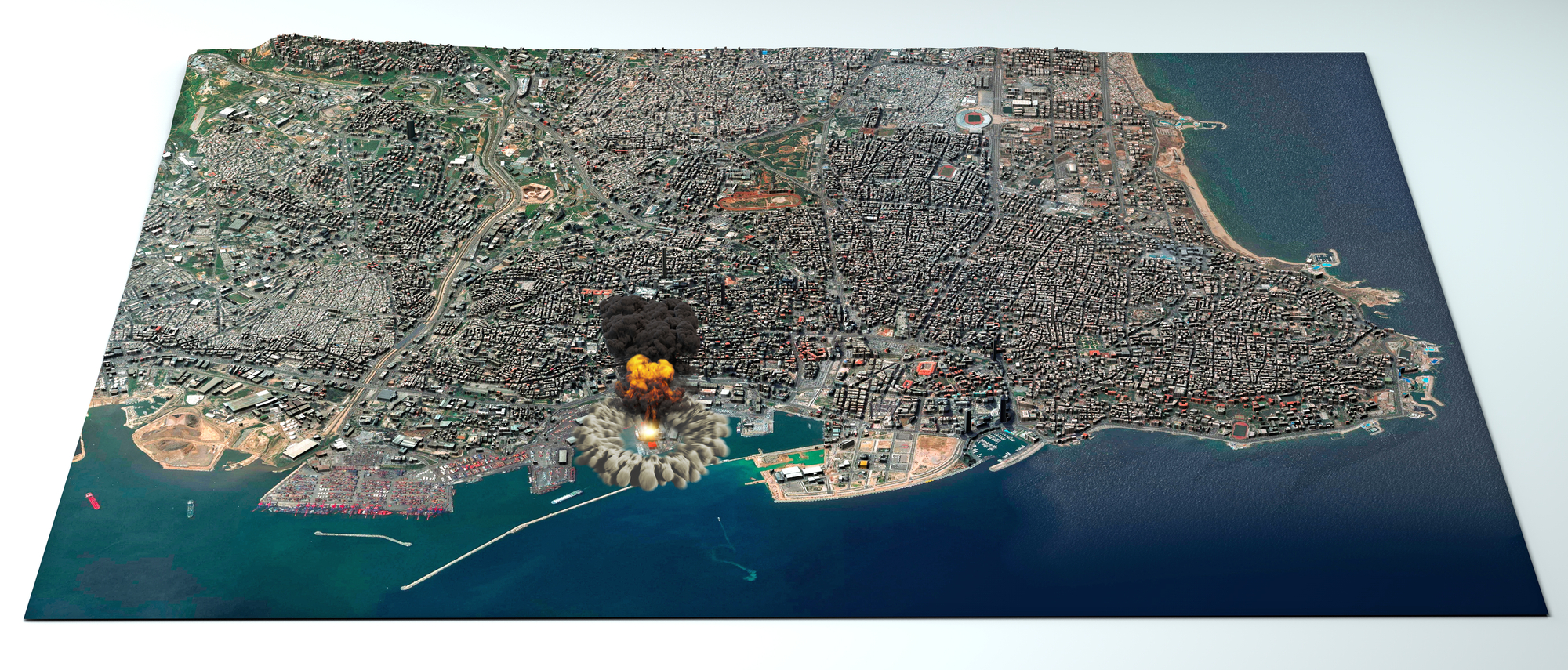

The powerful explosion that rocked Beirut, Lebanon, on Tuesday has so far killed more than 150 people, injured thousands, and destroyed dozens of buildings in the country’s capital city. But one aspect of the explosion that was caught on video has some people puzzled: The blast created a massive mushroom cloud similar to those seen after nuclear blasts, prompting some online observers to question whether the explosion was the result of an atomic weapon.
Explosives experts now say that the towering fireball was likely caused by a 2,750-ton stockpile of ammonium nitrate stored in a warehouse at the port. Ammonium nitrate is a highly reactive chemical used in fertilizer because the compound’s high concentration of nitrogen stimulates plant growth. It’s also a key component in a compound called ANFO (for ammonium nitrate/fuel oil), which is used as a blasting agent by the mining industry to shatter large aggregations of rock.
Lebanese officials said that the ammonium nitrate had been stored in a warehouse at the port since 2013 after being confiscated from a Russian-owned cargo vessel called the Rhosus.
While the explosion was not nearly as large as a nuclear blast, which can scorch a 2.5-mile radius or more depending on the size of the weapon, it sank a cruise ship that was harbored nearby, blew out apartment windows several miles away, and showed up on seismographs monitored by the US Geological Survey, who equated its energy to a 3.3-magnitude earthquake.
Investigators now want to figure out what caused the blast to happen now rather than at some point over the last seven years. Under normal conditions, ammonium nitrate doesn’t combust—but if it’s exposed to intense heat and is mixed with certain types of fuel, the results can be catastrophic. Initial reports suggest that fireworks stored at the port were somehow set off, leading to the larger eruption.

Several of the largest accidental explosions and terrorist acts in history, including the 1947 Texas City disaster and the 1995 Oklahoma City bombing, involved ammonium nitrate. The compound is still in widespread use around the world.
The explosion also came eerily close to the 75th anniversary of the atomic blasts that destroyed the Japanese cities of Hiroshima (August 5) and Nagasaki (August 9) in 1945 at the end of World War II. While the Beirut explosion was powerful enough to form a so-called mushroom cloud, it lacked several of the telltale characteristics of a nuclear reaction.
A typical nuclear reaction begins with a searing white flash caused by the heat of the weapon’s radioactive contents, usually uranium or plutonium. The energy released is so vast and immediate that it releases a powerful shockwave capable of leveling buildings and trees. Nuclear weapons also emit a so-called thermal pulse, followed by the rapid spread of radiation. “We did not see anything remotely like that in Beirut,” says Vipin Narang, an associate professor of political science and member of the Security Studies Program at MIT.
The Beirut fireball’s vivid red color sets it apart from the aftereffects of an atom bomb, too. “It’s characteristic of NO<sub>2</sub> compounds,” Narang says, which are by-products of ammonium nitrate explosions. When released into the air, the gas can lead to respiratory issues; according to the American Lung Association, inhaling it increases the chance of inflammation of the airways, coughing and wheezing, and reduced lung function. High levels of ammonia in the air can cause blindness, lung damage, and death as well. So far in Beirut, there have been no reports of extensive negative health impacts from breathing the air following the explosion.
The unusual size of the blast and the resulting mushroom cloud that rose into the Lebanese sky caused an immediate reaction on Twitter. In a tweet that has since been deleted, American sports reporter Chris Palmer wrote, “That’s a mushroom cloud. That’s atomic.” Palmer was subsequently publicly rebuked on social media by nuclear experts for his hasty assessment, but not before garnering hundreds of retweets and likes.
“Any large explosion makes a mushroom cloud,” says Jeffrey Lewis, a professor at the Middlebury Institute of International Studies at Monterey and an expert in arms proliferation. “The fireball is cooling and expanding and interacting with the atmosphere. When it cools you get that mushroom shape of cloud formation.” Lewis estimates that the one in Beirut was equivalent to a few hundred tons of TNT.
Other security experts also debunked the atomic question. “Pretty much from the first video I knew it had to be ammonium nitrate,” says Cheryl Rofer, a retired chemist who spent 35 years of her career at the US Department of Energy’s Los Alamos National Laboratory. “Nuclear explosions are so much bigger.”
Mushroom clouds can occur naturally, too, when volcanoes erupt or supernovas explode. In both cases, expanding gas accelerates into a denser field of gas, causing turbulent vortices of material that resemble a mushroom. The term predates the nuclear era with numerous historical accounts of explosions, including the WWII bombing of the German island of Heligoland, leading observers to remark on the fungi-like shape.
While the red haze has finally cleared in Beirut, authorities are still puzzling over the exact causes of the explosion. But whether they decide to pin it on human error, political apathy, or something else, radiation can be ruled out of the conversation for good.
